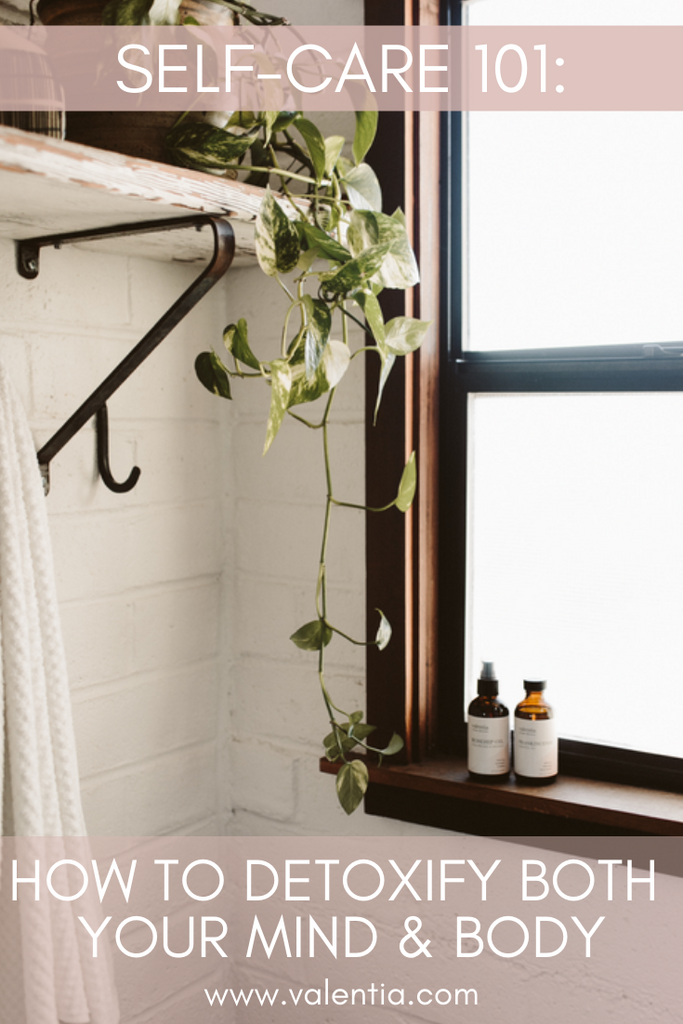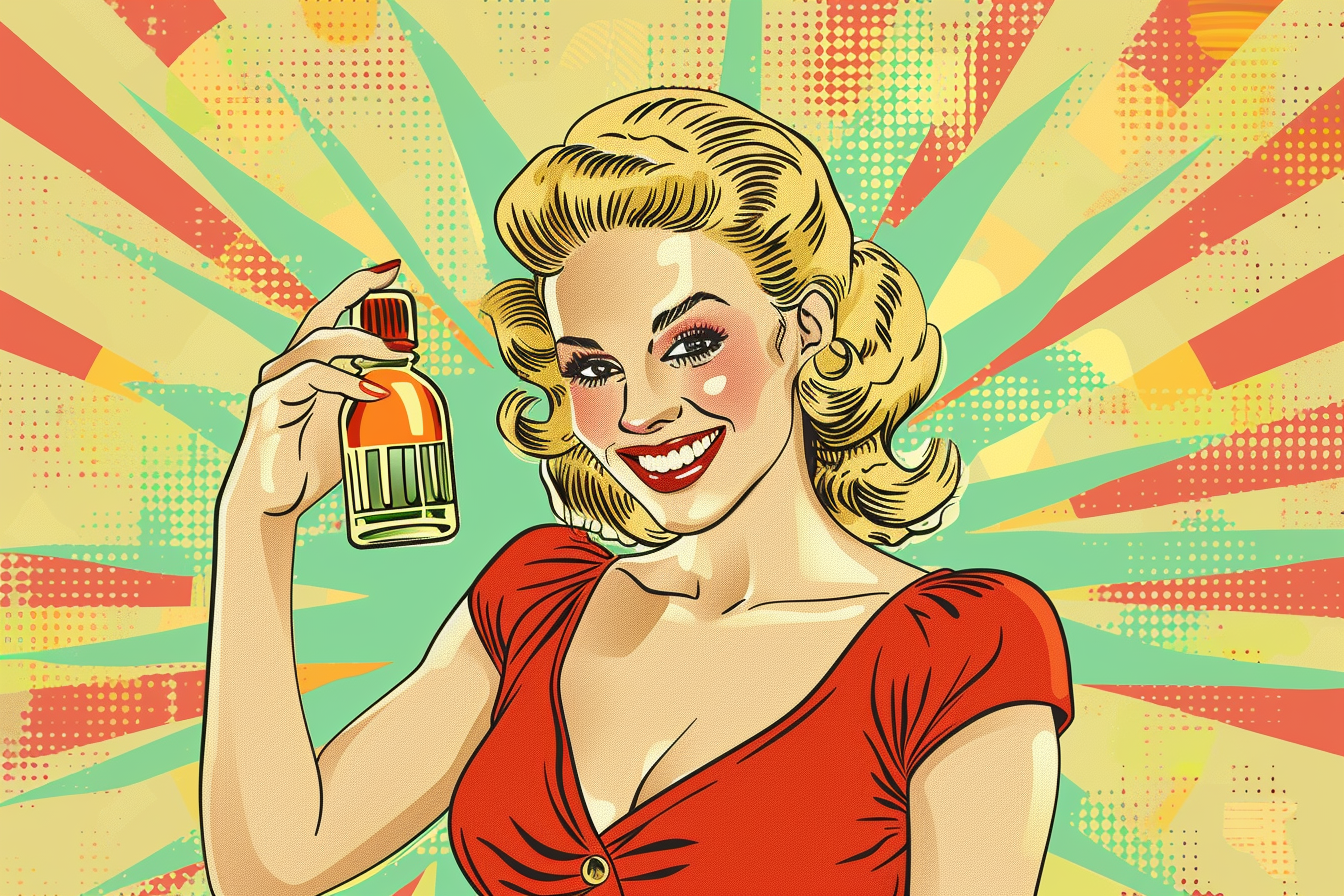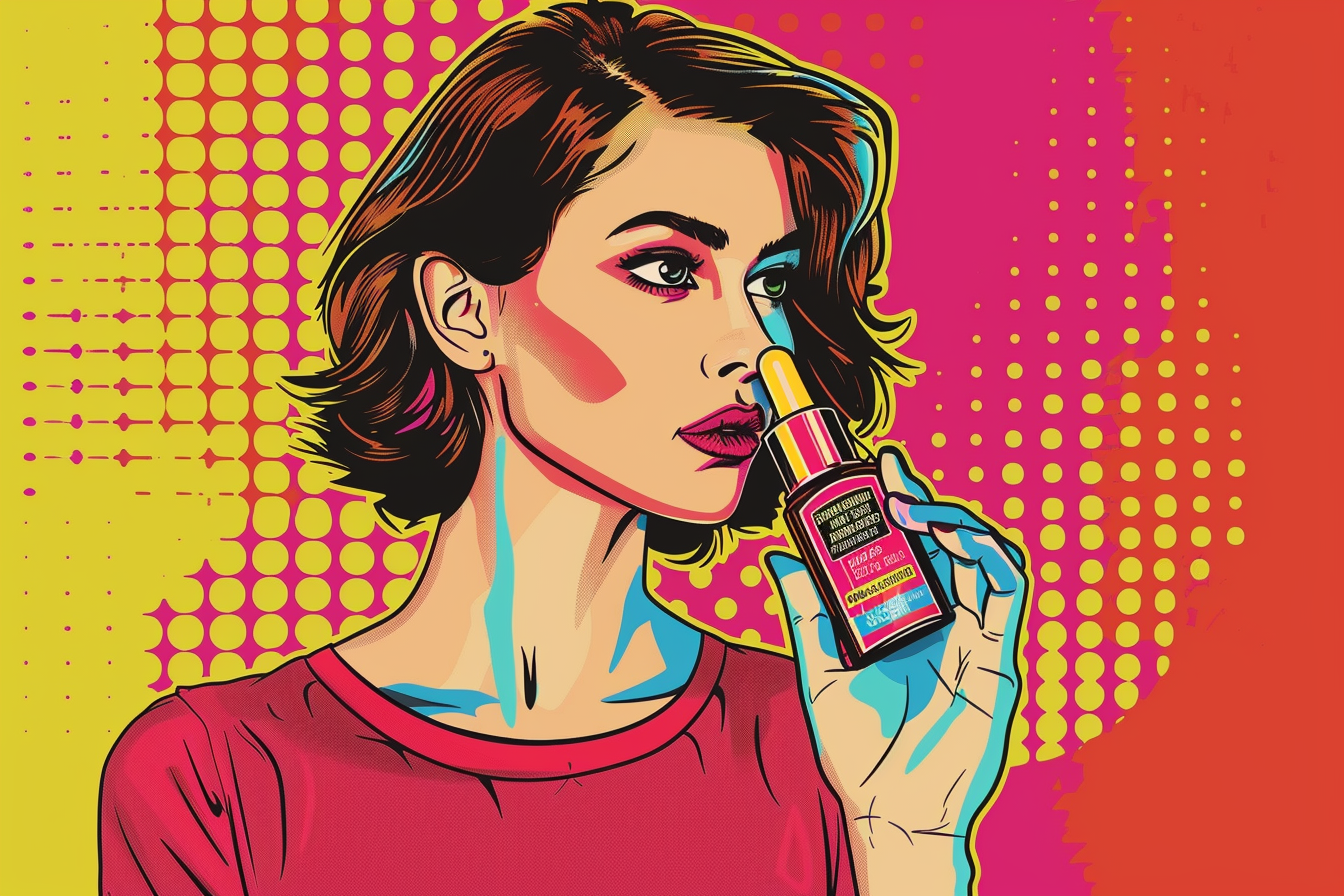
Bringing a sense of consciousness to every aspect of your life is no easy feat. And yet, you’ve taken the plunge and decided to rid your skincare regimen of artificial toxins and ingredients so that you can better care for your body and mind. Way to go!
With your hygiene and skincare products finally free of ingredients like sulfates, artificial preservatives, artificial colors, phthalates, formaldehyde, toluene, parabens, and other harmful gunk—your cleanup is off to a great start.1,2,3,4,5,6,7
And eliminating synthetic fragrances detoxifies your life even further—since the term “fragrance” may refer to thousands of unsafe chemicals, many of which emit VOCs and other toxic chemicals.8,9
Now that you’ve taken these first important steps on the road to well-being, (which we at Valentia define as joy and freedom to be your truest self), it’s time to consider other areas of your life where you can purge the unnecessary and create space for new and better experiences.
What toxic people are still hanging around in your life? What toxic thoughts keep running through your mind? What foods are you still eating, and what stories are you still telling yourself that are holding you back from your very best possible experience? The time has come to detoxify your life.

Detoxify Your Mind: Transform Lack and Limitation Into Positivity and Possibility
Many of us don’t think much about detoxifying our mental environment, but it’s actually a great place to start deepening any personal cleanup journey. Do you find your mind often races with fearful or negative thoughts?
If so, you're not alone—and perhaps even more importantly, it’s not your fault. We humans are simply wired that way. Just like the fight or flight response evolved in order to help us survive danger, our brains are wired to zero in on negative conditions that pose a potential threat. After all, we wouldn’t survive long if we ignored charging tigers because we were too caught up in enjoying the breathtaking beauty of nature around us.
This tendency, often referred to as negativity bias or negativity dominance, becomes a problem in our much physically safer modern world when our brains remain vigilantly on the lookout for threats. The end result is that we tend to naturally give more weight to negative stimuli than to pleasing things, reacting to our unpleasant or scary experiences more strongly—and giving them more weight than all the wonderful gifts that surround us in any given moment.10
Thankfully you don’t have to resign yourself to being stuck in a negative place. Our brains retain a high degree of neuroplasticity throughout our lives, and it’s never too late to detox negative brain bias with a personal rewiring job.11
The thing to keep in mind is that because negativity inherently has more of an impact on the brain than positivity, you’ll have to throw an extra dose of positivity at each negative thought you want to counteract. Here are a few ideas to help you start detoxing from negative thinking habits once and for all:
• Put fear in its place. Fear is the beast we share the forest with, but you don’t have to feed it. It can ride along with you in your life but it doesn’t drive, it sits in the back seat. As Elizabeth Gilbert eloquently puts it, “It doesn’t even get to choose the music.”
• Start a gratitude journal. Each night before bed, write down at least five awesome things (the more the better!) that took place during the day. You’ll be surprised how filled with good stuff even the most challenging days turn out to be, and that awareness really helps shift perspective into a more positive place.
• Crush each unpleasant thought with multiple positive ones. When you catch yourself beginning to entertain a negative thought, immediately nip it in the bud by replacing it with at least three positive ones. If you’re having trouble coming up with happy thoughts, try going through your five senses and notice something nice you’re experiencing with each one. The chirping of birds or even the feel of your feet in comfy shoes might be all you need to trigger the shift.
• Replace dread with anticipation. Whenever you find yourself worrying about the future, try this calming positivity exercise that shifts the perception of time from scary to sweet: First identify one of your happiest memories and re-experience it with as many of your senses as you can engage. Next, breathe deeply into the present moment, taking note of all the blessings currently in your life. Finally, identify something you’re really looking forward to and imagine yourself experiencing it joyfully, engaging as many senses as you can.
• Accentuate the positive. When your inner voices start telling bad stories about you, release this negative dialogue by consciously identifying as many positive characteristics about yourself as you can come up with. What are you good at? Are you kind to others? Smart? Funny? Generous? Do you have a warm smile? Take the opportunity to pat yourself on the back. (A variation of this exercise will also help cleanse away negative thoughts about others. If someone is annoying you, try to think of as many positive aspects about that person as you can come up with. At the very least, it should replace your scowl with a smile or a laugh.)
Because the flight or fight stress response is so closely related to negative brain bias in general, treating yourself to regular doses of mindfulness and relaxation experiences is helpful in detoxifying your state of mind. You might discover that mindful eating, meditation, guided imagery, yoga, qigong, aromatherapy with relaxing essential oils, halotherapy (salt cave sessions), or even monthly massages can help keep toxic thoughts at bay.
Detoxify Your Relationships: It’s OK to Set Boundaries
We humans weren’t designed to journey through life alone, and our interactions with others should rank high among our most joyful and meaningful experiences. Unfortunately, that’s not always the case. Certain people and relationships can come into our lives that are downright toxic—sapping our energy and feeding destructive emotions like anger, resentment, self-doubt, and even fear.
You needn’t feel obligated to allow these situations to continue. You’re worthy and deserving of the most nurturing, fun, and supportive relationships possible. If you’re experiencing anything less, it’s time for a serious relationship detox. When relationships aren’t bringing you the joy they should:
• Learn to say no. If people are taking advantage of your good nature, saying no to requests that make you uncomfortable is not only OK—it’s actually healthy for everyone involved. Setting boundaries with clear communication can even smooth out relationships going forward, preventing you from constantly being put on the spot.
• Ask for what you need. By the same token, when you have legitimate needs, you shouldn’t have to shoulder the burden alone. Rather than harbor toxic resentment over the fact that you’re always doing for others and no one takes care of you, reach out to those close to you when you need a shoulder to cry on, or someone to be by your side during a challenging ordeal. How can anyone know you need a helping hand if you don’t ask?
• Release relationships that no longer serve you. When a business or personal relationship truly holds nothing redeeming for you—if it makes you cry more than laugh, consistently brings you down, makes you feel bad about yourself, or especially if it puts you in any sort of danger—it’s time to let that relationship go. That can be scary, especially if it means changing jobs or severing a long-term romantic partnership, but the reward for your courage is that your soul will feel cleansed and your life will become more authentic and meaningful than you might ever have imagined.
Detoxify Your Body: Clean Up Your Diet
Cleaning up your skincare routine is a wonderful, essential step in detoxifying your body, but no body and life detoxification is complete without cleaning up your diet—since you truly are what you eat. And since glowing health begins in the gut, embracing a clean, gut-healthy way of eating is one of the best ways to approach detoxifying through food.
Begin by taking inventory of your fridge and cupboards. Read ingredient labels carefully, and toss anything toxic you find. What exactly has to go? This handy list will help you get started:
• All processed foods including cold cuts, TV dinners, and prepared foods with ingredients you can’t pronounce
• Genetically modified foods
• Artificial flavors
• Chemical preservatives
• Synthetic coloring
• Artificial sweeteners
• Refined sugar and foods containing it like candy, cakes, ice cream, cookies, etc.
• Refined carbs like white bread, white pasta, and white rice
• High fructose corn syrup (sometimes referred to as corn sugar)
• Trans fats and other unhealthy fats
Now that your trash can is most likely overflowing, you’re ready to restock your food reserves with clean, healthy alternatives including:
• Whole plant foods, preferably local and organic in their natural state. These foods are high in prebiotic fiber, which provides the perfect nutrition for your beneficial gut microbes. Some great choices include fruits like apples, berries, and bananas, as well as vegetables like tomatoes, broccoli, greens, squash, and yams.
• Healthy fats like avocado, almonds, and chia seeds
• Complex carbs like brown rice, sprouted grains, and legumes
Any meat, eggs, dairy, and seafood you eat should be organic if possible, non-GMO, and free of artificial coloring, antibiotics, hormones, and preservatives. And because modern life can be tough on friendly gut flora, you may also want to include a probiotic supplement and an organic prebiotic powder to your detoxifying diet regimen.
The fact that clean eating is so good for your microbial and overall wellness is reason enough to improve your diet, but there’s an additional bonus! Your enteric nervous system (sometimes called the second brain) allows the microbiome and the brain to communicate—and it turns out your microbes can affect your feelings!12,13 So when you balance your gut through the wholesome foods you eat, you’ll also be supporting the positive thoughts and mood you’ve been putting so much energy into achieving.
The combination of a natural skincare routine, attention to positivity, cleaning up toxic relationships, and a gut-healthy diet can help you detoxify every aspect of your mind, body, and spirit. Don’t be surprised when you begin to wake up each morning with an inner sense of lightness and joyful anticipation. And always remember, you deserve nothing less!
References:
1. S.1014 - 114th Congress (2015-2016): Personal Care Products Safety Act. (2016, September 22). Retrieved from https://www.congress.gov/bill/114th-congress/senate-bill/1014
2. Babich, H. (1997). Sodium lauryl sulfate and triclosan: in vitro cytotoxicity studies with gingival cells. Toxicology Letters, 91(3), 189-196. doi:10.1016/s0378-4274(97)00022-2
3. Lee, C. H., Kim, H. W., Han, H. J., & Park, C. W. (2004). A Comparison Study of Nonanoic Acid and Sodium Lauryl Sulfate in Skin Irritation. Exogenous Dermatology, 3(1), 19-25. doi:10.1159/000084139
4. Pan, S., Yuan, C., Tagmount, A., Rudel, R. A., Ackerman, J. M., Yaswen, P., … Leitman, D. C. (2015). Parabens and Human Epidermal Growth Factor Receptor Ligand Cross-Talk in Breast Cancer Cells. Environmental Health Perspectives, 124(5). doi:10.1289/ehp.1409200
5. Environmental Health Perspectives – Asthma in Inner-City Children at 5–11 Years of Age and Prenatal Exposure to Phthalates: The Columbia Center for Children’s Environmental Health Cohort. (n.d.). Retrieved from https://ehp.niehs.nih.gov/1307670/
6. Hauser, R., & Calafat, A. (2005). PHTHALATES AND HUMAN HEALTH. Occupational and Environmental Medicine, 62(11), 806-818. doi:10.1136/oem.2004.017590
7. Duty, S. M., Singh, N. P., Silva, M. J., Barr, D. B., Brock, J. W., Ryan, L., … Hauser, R. (2002). The Relationship between Environmental Exposures to Phthalates and DNA Damage in Human Sperm Using the Neutral Comet Assay. Environmental Health Perspectives, 111(9), 1164-1169. doi:10.1289/ehp.5756
8. Steinemann, A. (2017). Fragranced consumer products: effects on asthmatics. Air Quality, Atmosphere & Health, 11(1), 3-9. doi:10.1007/s11869-017-0536-2
9. Volatile Organic Compounds' Impact on Indoor Air Quality | US EPA. (2017, November 6). Retrieved from https://www.epa.gov/indoor-air-quality-iaq/volatile-organic-compounds-impact-indoor-air-quality
10, Rozin, P., & Royzman, E. B. (2001). Negativity Bias, Negativity Dominance, and Contagion. Personality and Social Psychology Review, 5(4), 296-320. doi:10.1207/s15327957pspr0504_2
11. Adlaf, E. W., Vaden, R. J., Niver, A. J., Manuel, A. F., Onyilo, V. C., Araujo, M. T., … Overstreet-Wadiche, L. (2017). Adult-born neurons modify excitatory synaptic transmission to existing neurons. eLife, 6. doi:10.7554/elife.19886
12. Wang, Y., & Kasper, L. H. (2013, December 24). The role of microbiome in central nervous system disorders. Brain, Behavior, and Immunity, 38, 1-12.
13. Bravo, J. A., Forsythe, P., Chew, M. V., Escaravage, E., Savignac, H. M., Dinan, T. G., . . . Cryan, J. F. (2011). Ingestion of Lactobacillus strain regulates emotional behavior and central GABA receptor expression in a mouse via the vagus nerve. Proceedings of the National Academy of Sciences,108(38), 16050-16055.










